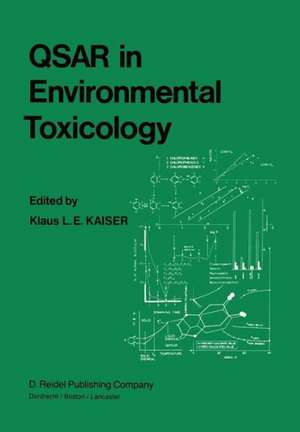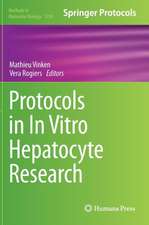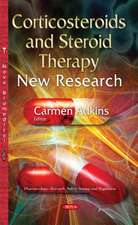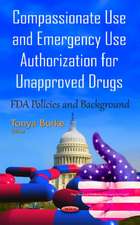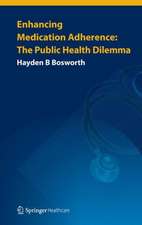QSAR in Environmental Toxicology: Proceedings of the Workshop on Quantitative Structure-Activity Relationships (QSAR) in Environmental Toxicology held at McMaster University, Hamilton, Ontario, Canada, August 16–18, 1983
Editat de K.L. Kaiseren Limba Engleză Paperback – 23 aug 2014
Preț: 725.96 lei
Preț vechi: 764.17 lei
-5% Nou
Puncte Express: 1089
Preț estimativ în valută:
138.93€ • 143.52$ • 115.62£
138.93€ • 143.52$ • 115.62£
Carte tipărită la comandă
Livrare economică 25 martie-08 aprilie
Preluare comenzi: 021 569.72.76
Specificații
ISBN-13: 9789400964174
ISBN-10: 940096417X
Pagini: 424
Ilustrații: XIV, 406 p. 19 illus.
Dimensiuni: 170 x 244 x 22 mm
Greutate: 0.67 kg
Ediția:1984
Editura: SPRINGER NETHERLANDS
Colecția Springer
Locul publicării:Dordrecht, Netherlands
ISBN-10: 940096417X
Pagini: 424
Ilustrații: XIV, 406 p. 19 illus.
Dimensiuni: 170 x 244 x 22 mm
Greutate: 0.67 kg
Ediția:1984
Editura: SPRINGER NETHERLANDS
Colecția Springer
Locul publicării:Dordrecht, Netherlands
Public țintă
ResearchCuprins
Foreword.- Structure—activity relationships for toxicity of hydrocarbons, chlorinated hydrocarbons and oils to Daphnia magna.- Comparative toxicity and metabolism of tetrachlorobenzene isomers.- An examination of the role of rotational barriers in the toxicology of PCB’s.- The use of rapid biochemical indicators of toxicant stress to generate biological data bases for QSAR.- The use of SIMCA pattern recognition in the analysis of complex chromatographic data.- Structure—activity models of biological oxygen demand.- Environmental hazard profile—test results as related to structures and translation into the environment.- Predicting the environmental fate of toxic contaminants in large lakes: data requirements for mathematical models.- The need and requirements for quantitative structure—activity relations (QSAR) in the Great Lakes Water Quality Program.- Assessment of mutagenic effects in amphibian embryos.- Lethal dose versus lethal concentration as indicator of contaminant toxicity to fish.- QSAR studies on chlorophenols, chlorobenzenes and para—substituted phenols.- Quantitative structure—activity relationships in ecotoxicology: possibilities and limits.- Toxicities of selected chloroanilines to four strains of yeast.- Comparative structure—toxicity relationships between acute and chronic effects to aquatic organisms.- Relationships between physical—chemical and environmental partitioning coefficients.- Validation of fish toxicity QSARs for certain non-reactive, non—electrolyte organic compounds.- The relationship between bioconcentration factor in rainbow trout and physical—chemical properties for some halogenated compounds.- Toxicities of chloroanilines to Photobacterium phosphoreum and their correlations with effects on other organisms andstructural parameters.- Structure—activity correlations of selected azaarenes, aromatic amines, and nitroaromatics.- Data evaluation in the development of QSAR.- General Discussion.- Author Index.- Formula Index.
